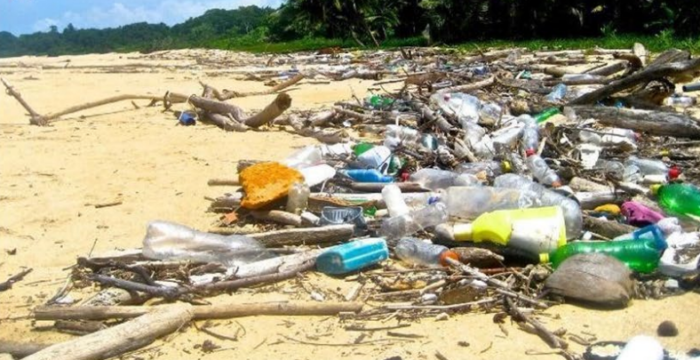Scientists have found 414 million pieces of plastic debris on remote islands. That is the result from a survey of plastic pollution on the beaches of Australia’s Cocos Islands. These findings suggest that the problem of plastic pollution may have been underestimated, as the majority of plastic pollution may actually lie below the surface.
About 414 million pieces of debris are polluting the remote islands, with most of them being under the surface, a new study has found. However, even this finding could be an underestimate. This is because the majority of this plastic is below the surface, and most surveys do not examine below the surface. Thus, the amount of plastic pollution globally may be way more than previously thought.
[smlsubform prepend=”GET THE SAFETY4SEA IN YOUR INBOX!” showname=false emailtxt=”” emailholder=”Enter your email address” showsubmit=true submittxt=”Submit” jsthanks=false thankyou=”Thank you for subscribing to our mailing list”]
Namely, the scientists surveyed seven of the 27 islands, estimating that they had 262 tons of plastic. A quarter of those pieces of debris were single-use or disposable items, like straws, bags and toothbrushes.
In addition, 93% of the debris found was buried below the surface, however because of the fact that the researchers only dug 3.94 inches into the sand, they were not able to access some beaches that are known to have a lot of debris. This means that these findings could be conservative, according to lead author Jennifer Lavers, a research scientist at the University of Tasmania.
Two years earlier, in 2017, the same researchers indicated that the Henderson Island, a remote, uninhabited island in the South Pacific, was also the world’s most-polluted one.
More than 9 billion tons of plastic have been produced since the 1950s, with 7 billion tons ending as waste, in the form of microplastics. They originate mostly from packages and drink bottles and break up into tiny pieces in the environment. According to estimations, if this continues the world will end up with 13 billion tons of microplastics by 2050.
Even though they have been found in a variety of marine species, because of their small size, the problem they are causing is not getting the consideration it should. Recently, the world has begun looking on this matter as plastic microbeads were found in personal care products such as shower gel, and toothpaste. In fact, 4,360 tons of microbeads were used all over European Union countries in that year alone. Furthermore, in the US alone eight trillion microbeads are entering aquatic environments every day.
See further details in the following PDF































































